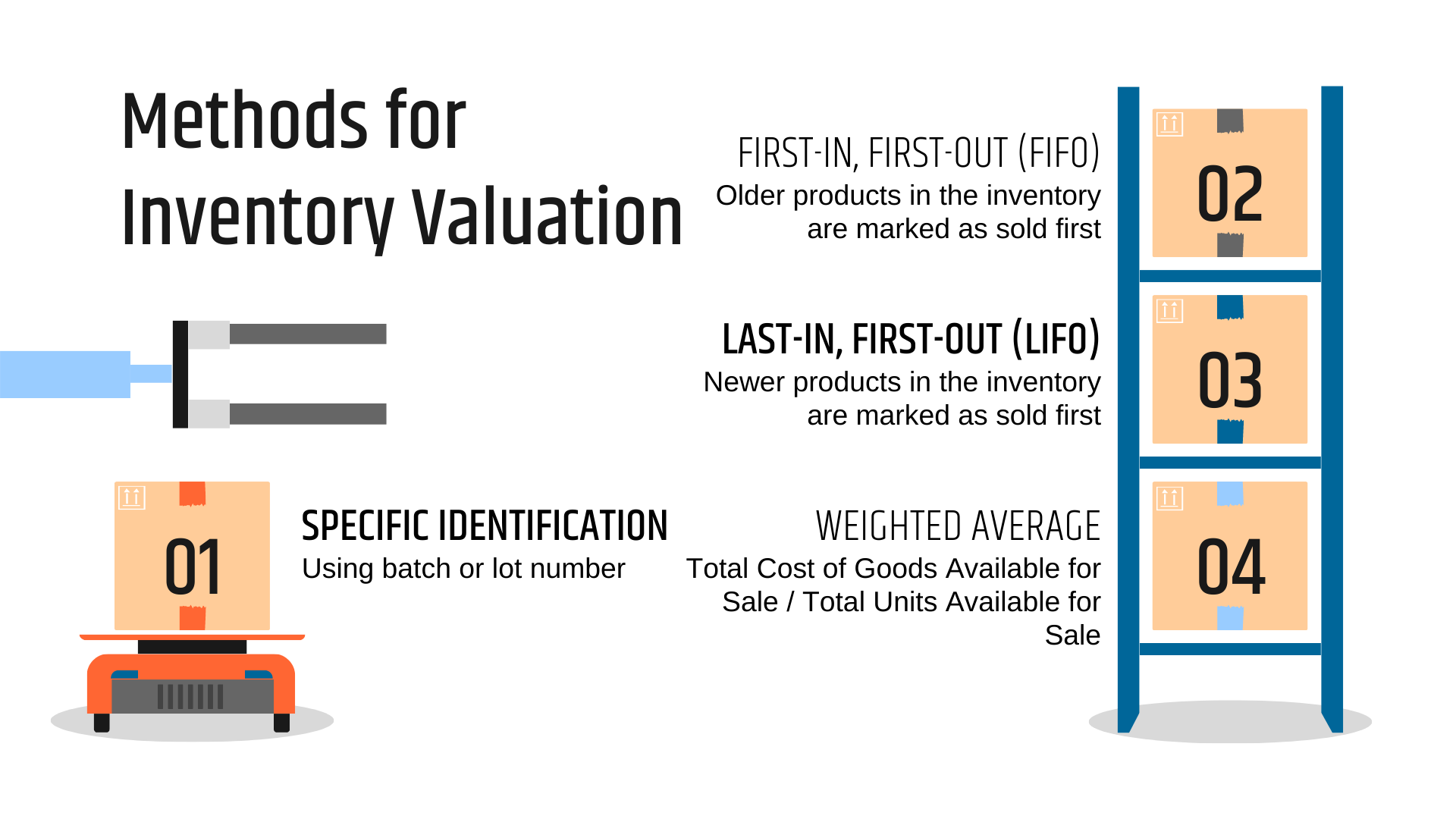
Boost Your Business Revenue with Smart Product Bundling Strategies
Product bundling is a marketing strategy that involves grouping two or more products together and selling them as a package deal. The bundled products can be related or unrelated, but the idea is to provide customers with a more complete solution or value proposition that meets their needs more effectively than if they purchased each item […]
Read More
Inventory Valuation Methods: A Comprehensive Guide
Inventory valuation refers to the process of assigning a monetary value to a company’s inventory or stock of goods for accounting and financial reporting purposes. The value of inventory is determined by considering the cost of acquiring or producing the goods, including any associated costs such as shipping, handling, and storage. The valuation of inventory […]
Read More
Just-in-Case Inventory Management: Balancing Risk and Efficiency
Just-in-case (JIC) inventory management is an inventory management strategy where a company maintains inventory levels higher than what is immediately required to meet current demand. The primary objective of JIC inventory management is to ensure that a company is prepared to meet any unexpected future demand or supply chain disruptions. This approach is commonly used […]
Read More
Maximize Efficiency with Effective Stock Management Strategies
Stock management, also known as inventory management, is the process of overseeing the purchase, storage, tracking, and sale of goods in a business or organization. It involves managing the inventory levels of a company’s products to ensure that they are sufficient to meet customer demand while minimizing excess or obsolete inventory. Stock management involves a variety of tasks, including forecasting […]
Read More
Mastering Product Lifecycle Management: Your Friendly Guide
Welcome to this comprehensive guide on Product Lifecycle Management! If you’ve been searching for a one-stop resource to help you navigate the vast world of PLM, you’ve come to the right place. This guide is designed to simplify PLM basics, making it easier for you to understand and master the crucial aspects of managing your products […]
Read More
Third-Party Logistics: Benefits and Challenges for Small and Medium Enterprises
Third-Party Logistics (3PL) refers to the outsourcing of logistics and supply chain management functions to a third-party provider. This provider can offer a range of services, including transportation, warehousing, inventory management, order fulfillment, and other related activities. The goal of 3PL is to improve the efficiency and effectiveness of logistics and supply chain operations while […]
Read More
Effective Vendor Management: A Guide for Businesses of All Sizes
Vendor management is the process of overseeing and managing the relationships between a business and its suppliers. It includes activities such as selecting vendors, negotiating contracts, managing risk, and ensuring that vendors meet the business’s needs. Importance of Effective Vendor Management: Vendor management is important for businesses because it can help to: In today’s competitive […]
Read More
Mastering Shipping and Logistics: Your Ultimate Guide
In today’s globalized economy, mastering shipping and logistics is more important than ever. With supply chains extending across continents and delivery times facing constant scrutiny, an efficient and effective logistics management system has become paramount for businesses of various sizes and niches. In this comprehensive guide, we will explore everything you need to know about shipping and logistics, setting the […]
Read More
Pick and Pack Process: A Guide to Successful Order Fulfillment
The world of eCommerce is booming, and with it comes the need for efficient order fulfillment. A well-oiled pick and pack process is the backbone of any successful eCommerce business. In this comprehensive guide, we will delve into the intricacies of the pick and pack process, explore various picking and packing methods, and provide optimization […]
Read More
Agile Inventory Management – Process, Benefits, and Challenges
Agile inventory management is an approach to inventory control that emphasizes flexibility, collaboration, and continuous improvement to optimize inventory levels and minimize costs. It is based on the principles of agile methodology and involves continuous monitoring of inventory levels and customer demand to quickly adapt to changes in demand and supply. The use of data […]
Read More